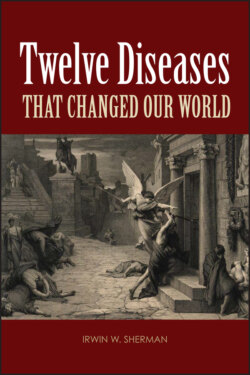Читать книгу Twelve Diseases that Changed Our World - Irwin W. Sherman - Страница 6
Porphyria Madness in the monarchy
ОглавлениеMary Queen of Scots (1542 to 1587) had a mysterious ailment. At the age of 24 she wrote, “Oftentimes I have great pains . . . ascending unto my head . . . it descends to my stomach so that it makes me lack an appetite . . . and there is sickness with great vomit . . . excuse my writing, caused by the weakness of my arm . . . wherewith we are tormented.” In 1570, when she had another attack, her symptoms were described by her physician: “terrible pains in the side made worse by every movement, even breathing. She vomited continuously, more than 60 times, and eventually brought up blood. She became delirious, and two days later she lost her sight and speech, had a series of fits, remained unconscious for some hours and was thought to be dead. Yet within 10 days she was up and about again. She had unquiet and melancholy fits, convulsions, shivering, difficulty in swallowing, altered voice, weakness of arms and legs so that she could neither write, walk or even stand unaided.” The onset of her symptoms was rapid and suggested to some in her court that she was being poisoned. Others judged her to be hysterical. It is most likely, however, that Mary Queen of Scots was neither hysterical nor the victim of poisoning. Instead, she and many of her descendants probably suffered from an inherited disorder—a curse of British royalty—that would alter the course of world history.
Mary Stuart, Queen of Scotland since birth, was engaged at the age of 3 to Prince Francis, heir to the throne of France; at age 15, when she married him, he was already King Francis II, so she became Queen of France as well as of Scotland. Such glory did not last very long. Francis II died unexpectedly a year after the marriage, and Mary returned to Scotland, where she later married Henry Stuart, Lord Darnley, a relation of the English royal family who was described by historians as a drunkard and an imbecile. Mary did not trust Darnley with affairs of state, and she had several male secretaries who advised her. One of her favorites was David Rizzio, who provoked such jealousy in Mary's husband that he arranged for Rizzio to be murdered. Darnley himself was murdered a year later, and it was widely believed that James Hepburn, 4th Earl of Bothwell, had conspired with the Queen to kill her husband. Shortly thereafter, Mary married Bothwell. This, together with Mary's episodes of blindness, depression, and inability to speak or stand, so disturbed the Scottish nobility that they forced her to abdicate the throne. Mary sought refuge and protection in England, where her cousin Elizabeth I was queen. Mary was an ungrateful and tormented guest in England and became involved in plots to kill Elizabeth. The plots were discovered, and in 1587 Mary was beheaded.
When Elizabeth I died in 1603, Mary's son, James VI of Scotland, succeeded her as James I of England. The King had a disease similar to that of his mother. According to his physician, Sir Theodore de Mayerne, “He was afflicted with pain . . . under his ribs . . . he glows with heat, and his appetite falls off; he sleeps badly; he readily vomits, at times so violently that his face is covered with red spots for two or three days . . . very often he suffered from painful colic . . . with vomiting and diarrhea, preceded by melancholy and nocturnal rigors . . . he had such pain and weakness in the foot that it was left with an odd twist when walking . . . In 1616 . . . for 4 months he had to stay in bed or in a chair . . . In 1619 . . . he sweats easily . . . often suffers bruises . . . he is of exquisite sensitiveness and most impatient of pain . . . He often passed urine red like Alicante wine.” Although diagnosis of medical conditions in persons living so long ago is uncertain, it is very likely that the mysterious disease suffered by Mary Queen of Scots, her son King James, and many of their descendants was porphyria, derived from the Greek word “porphuros,” meaning “purple,” with its telltale sign of red-purple urine.
